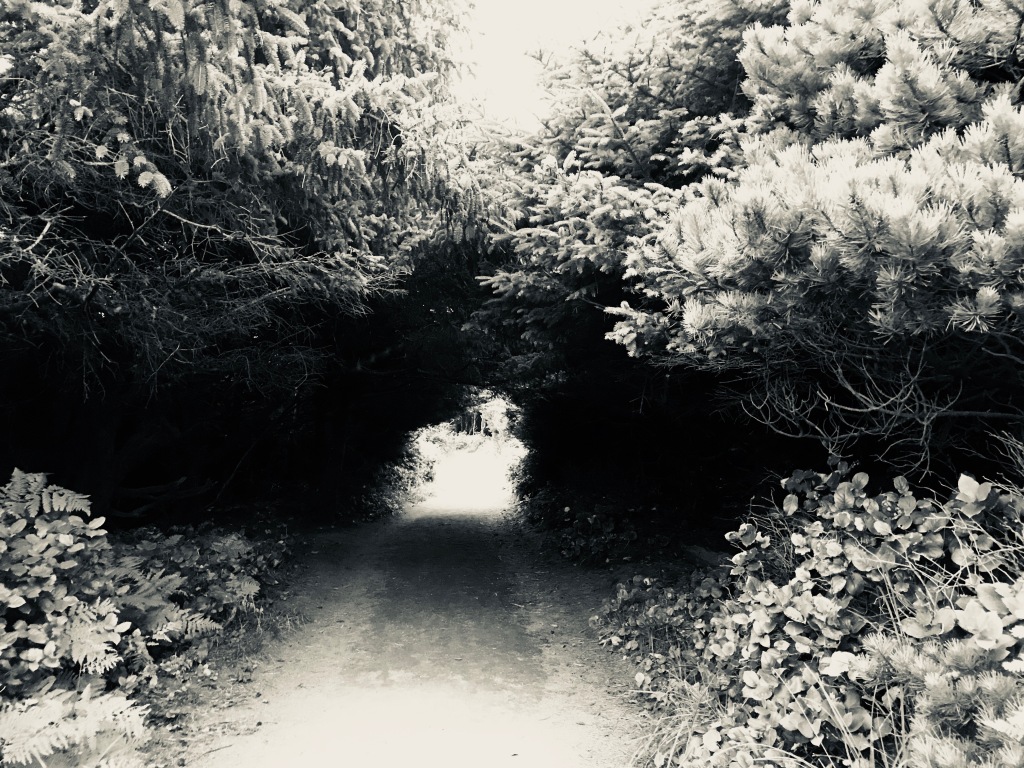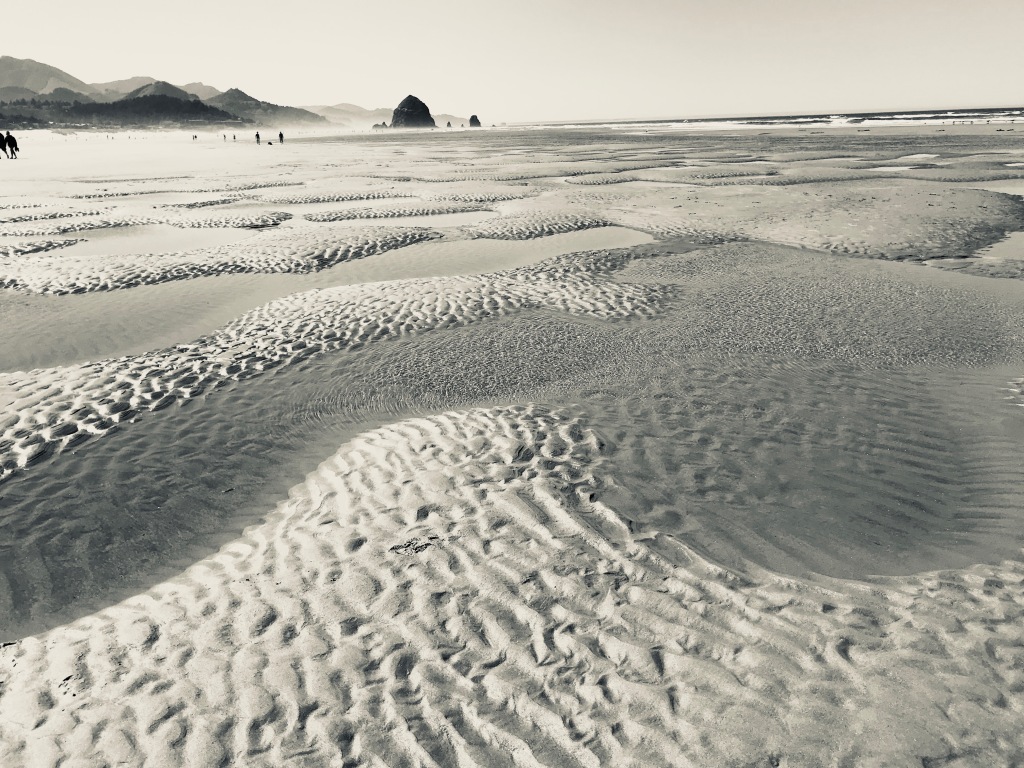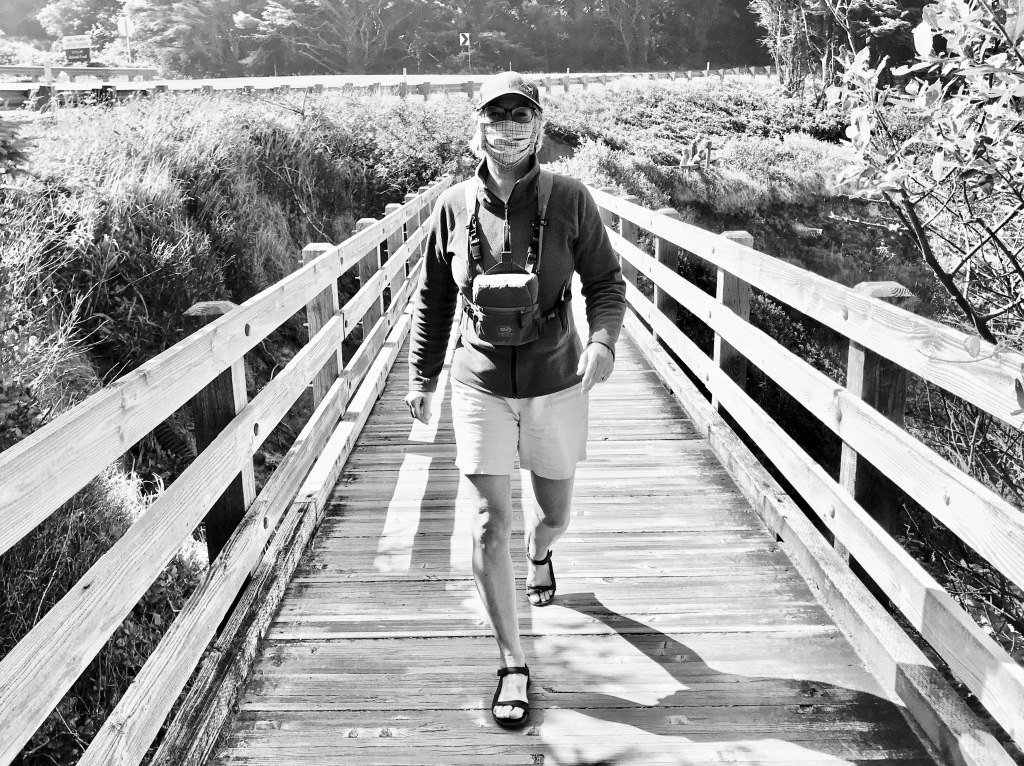I followed the soft, sandy path through a tunnel of bushes, thankful for shelter from the off-shore breeze. My homemade mask warmed my lips and nose. The crash of waves drowned out my footsteps. The path ahead led out of sight, but wherever it was going, I was deeply grateful to be upright, outside and in nature.

The same way I remember the alarm of 9/11, I’m going to remember this past March. The rising toll of the dying, the rapid shutdowns – schools, my parents’ senior residence, the entire country of Italy- plus, the sudden cancellations of conferences, travel, events, visitors, weddings – where was this going? Then one morning, while one daughter was being evacuated by the Peace Corps from Africa, and another daughter was cancelling her move to France, my manager told me to pack up my laptop and go home. For now.
“Now” lasted longer than we thought. Five months later, Oregon is slowly re-opening and hotels and restaurants are cautiously welcoming visitors back. After months of heartbreaking reports of loss and the isolation of telecommuting, I needed to get out. See something new. I needed the benign embrace of nature – forests, ocean, wildlife – to remind me of the world’s beauty and give me hope again.
With that in mind, my husband and I picked places we could safely visit nearby. We live within a few hours of dozens of state parks and wildlife refuges. There had to be some that were open and in Phase 2 counties. It would still be a gamble to find food, cell service and bathrooms, so we brought what we needed: maps of each county, a packed cooler and picnic gear, lots of water, Kleenex, extra masks, and the now ubiquitous hand sanitizer. With a loose itinerary in hand, we took off.
Our first stop was Jewell Meadows National Wildlife Area where tree swallows swooped and soared over the meadows. No Roosevelt elk in sight but I heard later that you can sign up to go on hay rides to feed the wildlife.
In Astoria, I was excited to finally learn more about the famous Corps of Discovery, the explorers headed by Lewis and Clark who set off in 1804 to find a navigable route to the Pacific Ocean. The Lewis and Clark National Historical Park includes the fort they built to winter over in. The museum was closed – as were other park museums we went to – but living history volunteers recounted hairaising tales outside by the fort. As with entry to any museum, wearing a mask was required.
From here, we drove to the Clatsop Spit, a sliver of beach formed by receding glaciers 8500 years ago. Next time I’m going to stop at the viewing platform to catch a glimpse of the roiling waters of the Columbia River bar, where the Columbia crashes into the Pacific.
We ate the best fish and chips ever at Hurricane Ron’s (1335 Marine Drive, Astoria), in an isolated table by the open crab tank then drove up the hill to watch the sunset from the Astoria Column. (Restrooms open, but the Column itself is closed for now.)

Day two, we strolled along beautiful Cannon Beach, then went to Cape Meares which was closed. On the map, my husband spotted a spit of land that stuck out into the bay. We crossed some grassy dunes, nearly collided with an actual Roosevelt elk, and found a hidden beach full of – I’m guessing – locals. That night we stayed at the Looking Glass Inn and ate a delicious, dinner in Depoe Bay at Tidal Raves.
Day three started with a birding stroll at Siletz Bay Natinal Wildlife Refuge. Summer isn’t the best time for birding in riparian areas, but we enjoyed the walk.
We picnicked in Gleneden at a community park overlooking the sea, then headed to Yachats, where we stayed and ate dinner at the Adobe Inn. Again, tables were far apart and diners were scarce. Super friendly staff and a stellar spot on the ocean.

Day four and five in Yachats, we explored Cape Perpetua – Thor’s Well, the Devil’s Churn – plus, an achingly beautiful Western Hemlock forest of 150-200 year old trees. We also admired the Hecata Head lighthouse, and watched sandpipers fishing for lunch in the tide pools. If you go, don’t miss the gorgeous view at Cape Perpetua’s hilltop lookout. All our activities were outside and people wore masks pretty much everywhere.

Lastly, on our way home, we stopped at two lovely spots –both nearly empty of people: Fern Ridge Lake, and William L. Finley National Wildlife Refuge.

Before the final hike of our vacation, we encountered a couple with a baby and a trucker changing out the portable restroom. That was it. Then we strapped on our binoculars and and followed the path.
If you go…click here for updated coronavirus information on counties in Oregon.
